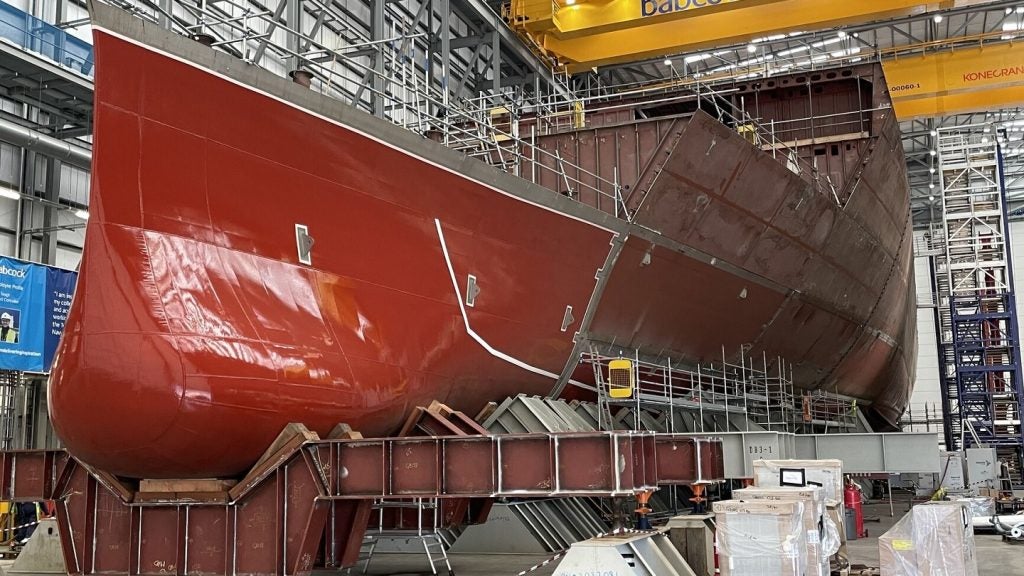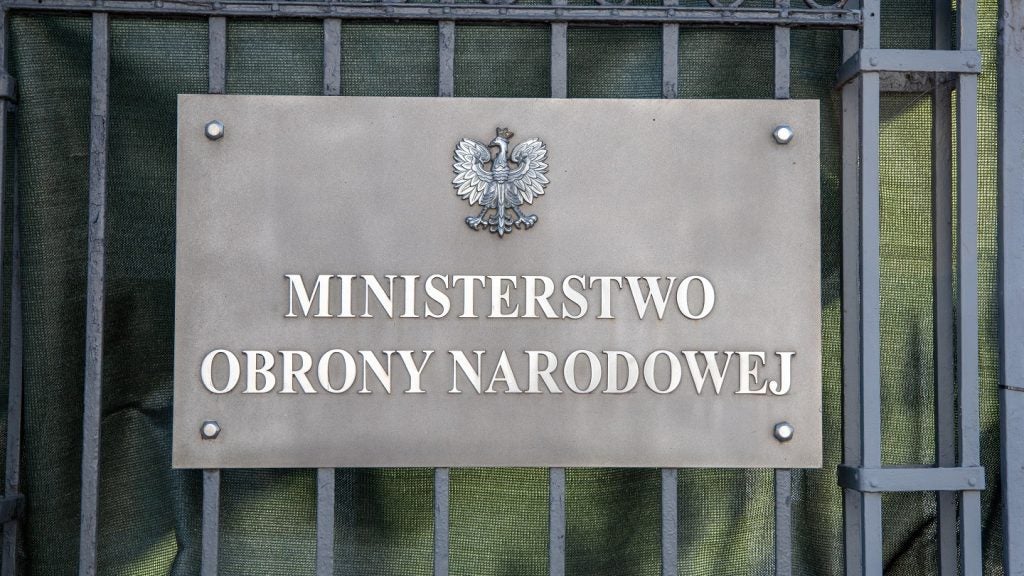The bulbous bow of the future UK Type 31 frigate HMS Venturer has been completed inside Babcock’s build hall at its Rosyth shipyard, a minor milestone in the build programme that will deliver a fleet of five new frigates to the Royal Navy.
In a post on social media, Babcock revealed the latest imagery of HMS Venturer and its completed bulbous bow, a key part of ship hydrodynamics that assists in the vessel’s endurance, manoeuverability, and sea keeping when underway.
The vessel, which will displace over 5,000t once completed and fitted out, is being built next to the second-in-class, HMS Active, inside the Venturer build hall. According to the Royal Navy, “several lower hull sections” are already constructed in situ in the assembly hall.
HMS Active will see its keel laid in September, one of the more significant early milestones in ship manufacture. The block building process of each vessel sees units built in separate manufacturing areas of Rosyth before being moved for painting and assembly.
Among the sections now in place on Venturer are a spine/backbone – the lowest parts of the frigate, such as the bow and keel, including Grand Blocks 01 (which includes the rudder and transom) and next to it 02, stated the Royal Navy.
HMS Venturer is due to be delivered to the Royal Navy by 2025. Other ships in the class will be HMS Active, HMS Bulldog, HMS Formidable, HMS Campbeltown.
Type 31: critical capacity for the Royal Navy
The Type 31 build is intended to quickly deliver five general purpose frigates into Royal Navy service to replace five outgoing, and ageing, Type 23 vessels. Any delays in the Type 31 build, which already looks tight given the turnaround of effectively one vessel per year, will impact a Royal Navy surface combatant force that looks set to dip to 15 hulls by the middle of the decade.
According to the UK’s shipbuilding programme, five Type 31 Inspiration-class general-purpose frigates will be introduced into Royal Navy service from 2027, with Babock completing the handover of the fifth and final vessel the following year.
Following each handover, the Royal Navy will begin a test and trials programme to ensure the vessel is ready for service, with HMS Venturer’s own programme due to be around four years long.
The Type 31 class was born from the realisation by the UK MoD that it could not afford to acquire 13 Type 26 anti-submarine warfare frigates from UK defence prime BAE Systems, instead constraining that programme to eight hulls. A stop-start competition to determine an alternative five-ship frigate requirement was won by Babcock using its Arrowhead 140 design, heavily derived from the Danish Iver Huitfeldt-class frigates.
However, in April, manufacturer Babcock entered into a dispute resolution process (DRP) with the UK Ministry of Defence (MoD) to determine liability for increased costs being sustained on the Type 31 frigate programme, with up to £100m in additional funds needed.
Providing a 2023 financial year and Type 31 programme update on 20 April, Babcock said it recognised over £600m in revenue on the Type 31 programme, which remained on schedule and due to conclude in 2028. However, the programme’s production plan was described as “demanding”, given the impact felt by UK industry during the Covid-19 pandemic, and had seen an increase in actual and projected costs.
Continuing, Babcock said that despite having been in dialogue with the MoD as to who is responsible for the additional costs under the contract, it had been “unable to reach agreement” and as such, has seen a DRP commence. A DRP could result in arbitration to determine who should bear the increased costs of the programme.
The original contact was signed in November 2019 to deliver five Inspiration-class Type 31 general purpose frigates, at an average production cost of £250m per vessel. The first-in-class of the Type 31s, HMS Venturer, is due to be structurally complete in December 2023 and construction commenced on the second ship, HMS Active, in January 2023.










